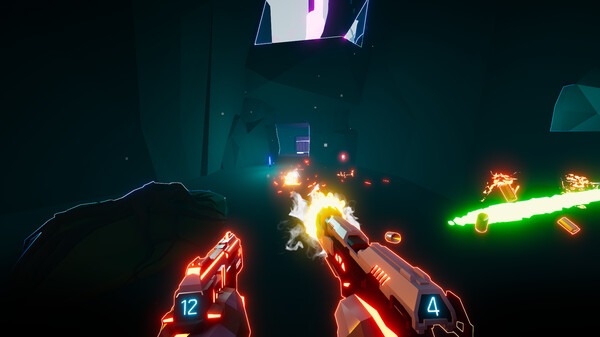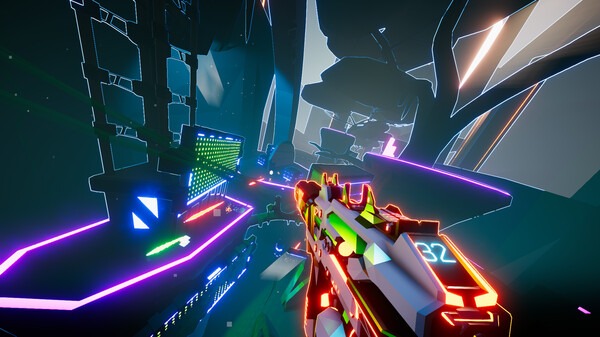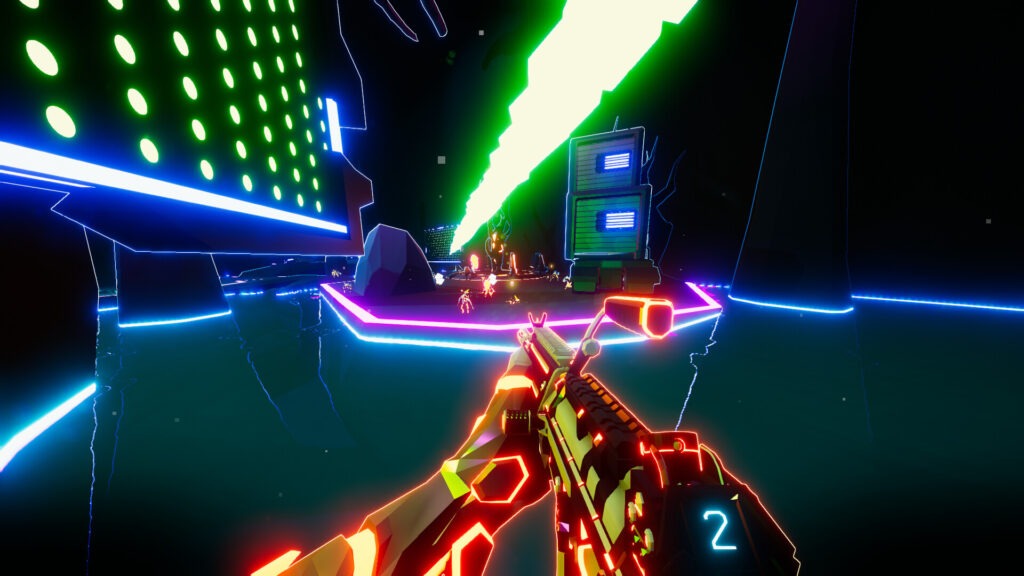GTTOD: Get To The Orange Door Review
Fast Facts
GTTOD: Get To The Orange Door
Developer: Andrew Smith
Publisher: Hitcents
Website: https://gttod.com/
Genre(s): Action, Adventure, Indie, Early Access
Platform: Steam
Age Rating: N/A
Release Date: 30.05.2019
Price: £16.75
A code was provided for review purposes
Orange You Glad We’re Beginning?
GTTOD: Get to the Orange Door is a roguelike first-person shooter. While I have not played a first-person shooting roguelike in the past, I am familiar with both genres and was excited to give this a go. Does this iteration leave an impact? Find out in this Rapid Review.
When I booted up GTTOD, I was immediately thrust into the action. There was no major story content, though, and apart from a simple tutorial, all I knew about the world was that I needed to get to the orange door at the end of each level. While this did make me feel a bit mixed about my character’s motivations, it did not take away from the game much at all.

Instead, the game focused on fast-paced combat. One of the identifying attributes of this game is how the combat action blends with the parkour elements. I had traditional abilities like movement, a crouch, and a jump, as well as more interesting ones such as wall running, vaulting, and an air dash. The movement was fundamental to the game, as platforms often had large gaps between them, or I was required to scale walls to progress. I enjoyed the movement techniques a lot. While it did not have a huge barrier to mastery, I found it fun to run around levels and explore a large variety of altitudes.
Entering Combat
In addition to the movement, GTTOD features plenty of combat mechanics. In addition to a vast arsenal of different weapons to collect on each run, the game features multiple items, upgrades, and otherworldly boons. I messed around with different shotguns, snipers, submachine guns, assault rifles, and even some more unique guns. While there were a couple of guns that were nonstandard, most of the weapons and upgrades here are nothing special. Snipers are effective at long range, while shotguns are effective at close range; truly standard. Similarly, the theming of these weapons was usually simple. I thought this worked well for the game, as I could easily tell what most weapon types did before using it.
The items were also interesting. I did not find myself using these much, but they came in handy when I did. I could throw grenades, call a supply drop, or even plant C4s. The most useful of these was a radar scanner that helped me navigate to the end of an area without getting lost. These tools combined with a melee attack, my weapons, and an ultimate ability combined to make me an unstoppable force.

However, while my offensive capabilities worked well, I was disappointed by the lack of enemy variety. There were a decent number of enemies, but they were not allocated much between locations. Additionally, handling them often led to similar results. Granted, the game is in early access, and I imagine the game will get more challenging as time goes on, but I reached the end of what was available without considering intricate strategies for any of the enemies apart from the bosses. While this is the case, a major reason this happened was how the levelling system works.
Getting Harder?
Instead of introducing increasingly challenging enemies, GTTOD increases enemy power level with the number of enemies defeated. I found this to be a very effective method of segmenting progress. I took out the enemies, received rewards for doing so, and then upgraded my character. However, as I played the game more, I found the reward for taking out enemies was not as lucrative as I initially thought. In fact, I found that avoiding all optional enemies helped me progress further, as I was still more than proficient enough to complete each stage. Though this sounds bad, I had a lot of fun with this. Tying difficulty to how many enemies I took out added another dimension to my decision-making. I was allowed to consider other options, which gave me a new perspective and made GTTOD unique.

Additionally, the game features permanent upgrades. In between runs, I could visit a shop with a unique collectable uncovered in runs. I am honestly not sure how this mechanic is designed to work, as it seems to have changed from when I initially picked up the game. However, currently, I can earn these points to unlock permanent upgrades randomly from the map or from a selection of potential upgrades for my character mid-run. While this still brings up the decision-making struggle between attempting a serious run and boosting my abilities for the future, I thought this was fun, and the way these upgrades are implemented forced me to consider what attributes I value most.
When the Beat Drops
I also enjoyed the music and visual effects. None of the enemies had particularly memorable designs, but the world was nice to move around in, attacks stood out, and everything felt like it belonged in the ecosystem of GTTOD.
The music was also lively, inspiring me to find a fast-paced way to navigate through the areas. It was heavily electronic, but it was never overwhelming and sometimes added a bit of calmness when time allowed for it. This also set the scene nicely, and I enjoyed hearing it in the background as I played.
Overall, I enjoyed my time with GTTOD. The game is a lot of fun both in premise and in practice. I found it engaging to run through levels yet just as fun to take out hordes of enemies. Still, nothing in this game stands out as particularly unique or fantastic. I enjoyed playing through it a lot and think most people could have a lot of fun here, especially if they like grinding for permanent upgrades. I look forward to seeing how the game continues to progress.

You can find and read our reviews on OpenCritic.





